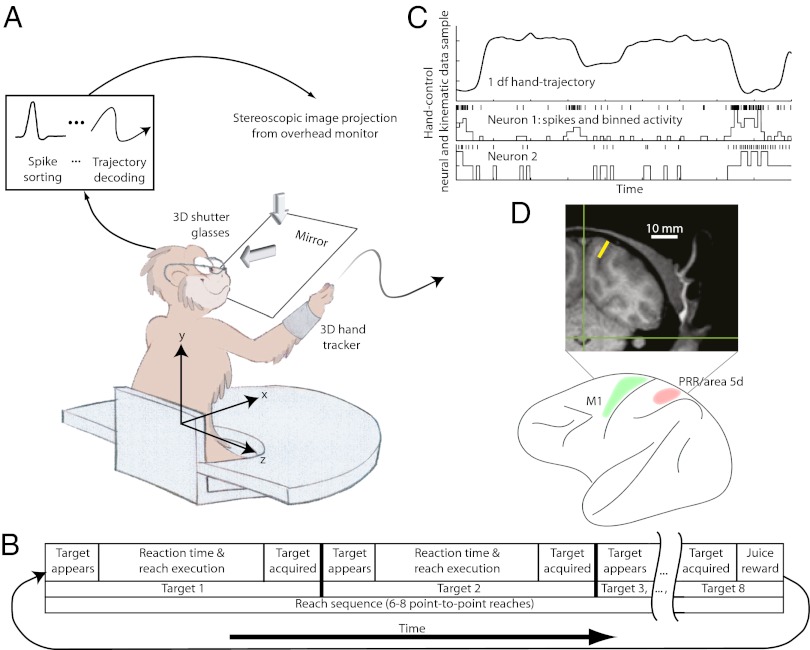Fig. 1.
Behavioral paradigm. (A) In daily recording sessions, each monkey guided a cursor in a 3D VR display to a reach target. The monkey first used his hand to control cursor movement (reach control). Then he steered the cursor using cortical activity (brain control) translated to cursor movement by the decode model identified from the preceding reach-control phase. (B) Timeline of the reach task. Reaches were performed in sequences of six or eight targets. The monkey was rewarded with juice after having completed a sequence of reaches. In brain-control mode, the monkey was rewarded after successful acquisition of single targets. (C) Single df trajectory sample, spike trains, and processed spike bins recorded simultaneously during the reaching task. (D) Unlike previous approaches targeting the motor areas, here, continuous control signals were extracted from PPC. Electrodes were implanted in PRR in the intraparietal sulcus (yellow marker in the coronal MRI slice) and area 5d on the cortical surface.

